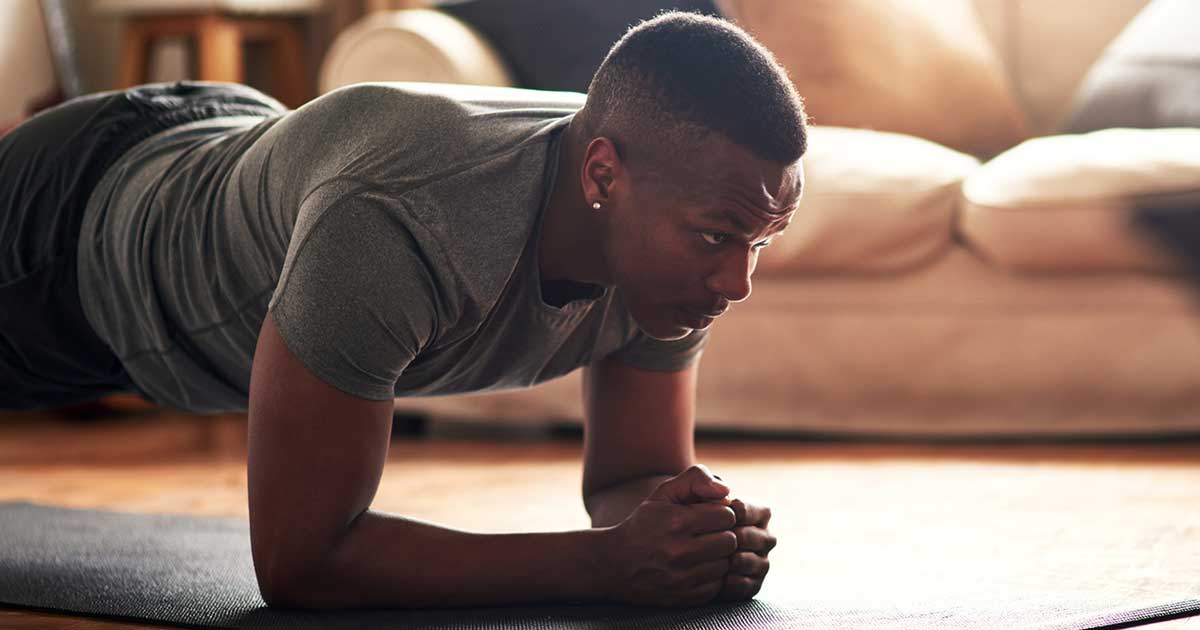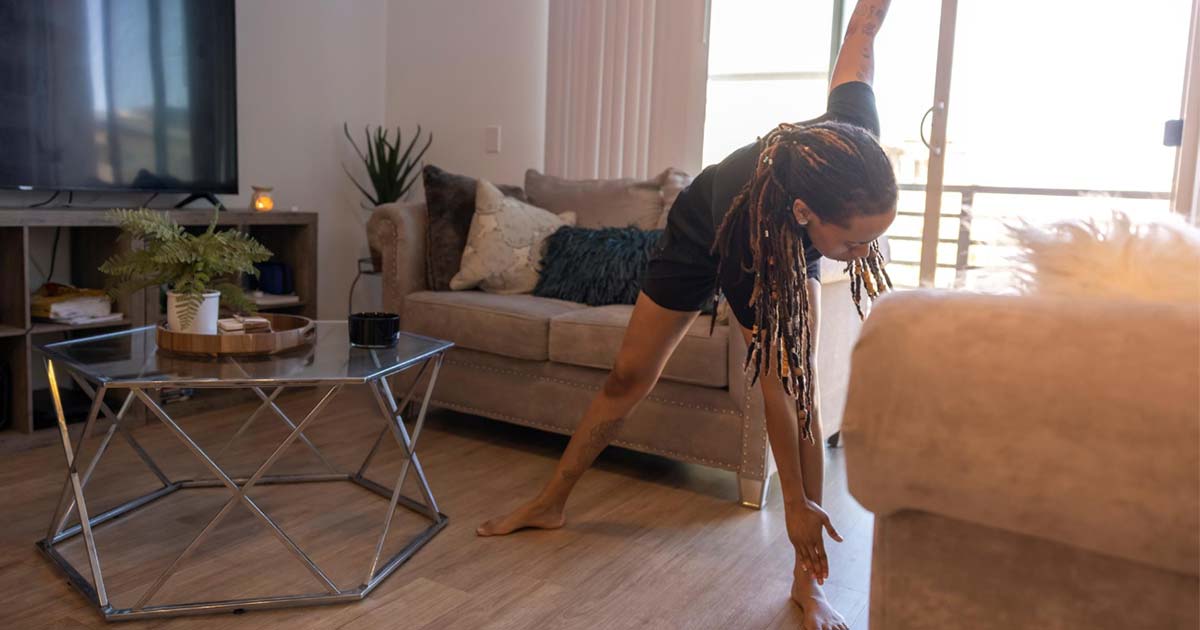
Advice to improve your movement, fitness, and overall health from the #1 in orthopedics in the U.S.
10 Exercises to Build Strength in Your Anterior Chain
A strong anterior chain is crucial for running, changing direction while running, and staying healthy during everyday activities.
Advice to improve your movement, fitness, and overall health from the #1 in orthopedics in the U.S.
You may not have heard of the anterior chain, but you’ve probably tried to work on it before—particularly if you were looking to sculpt a six-pack. This group of front-of-body muscles allows you to perform many types of exercise as well as everyday activities. (It’s the counterpart to the posterior chain, which runs along the back side of the body.)

It’s very common that people have tight hip flexors and upper quads and weak abs, says Mathew Welch, MS, CSCS, ATC, USAW-1, an exercise physiologist at HSS Sports Medicine Institute West Side. “Stretching is often a short-term solution that does not yield long-term benefits. This is why it’s important to improve both flexibility and strength in both the front and back sides of the body–everything works together.”
Depending on your daily tasks, the positions you put your body in will lead to tighter muscles in the anterior chain. “If you sit for eight to 10 hours a day for your job or have a long commute, those muscles are going to be really tight on the front side of the body because they're always in that shortened, contracted position,” he says. And make no mistake; just because they’re tight doesn’t mean they’re strong, he adds.
What is the anterior chain?
The muscles that make up the anterior chain are:
- rectus abdominis (the six-pack muscles)
- transverse abdominis (a deep layer of muscle that wraps around the entire body and provides stability to the front of our core)
- hip flexors (made up of the iliacus muscle and the psoas muscle to flex the hip)
- quadriceps muscles (the front and side muscles of the thigh)
- tibialis anterior (starts up high on the shin bone and wraps around the leg down to the ankle; helps control the foot position while running)
“Working these muscles will give you the biggest bang for your buck when you’re looking to prioritize your training and get results,” says Welch.
The anterior muscles help build core stability, control the knee position, and improve stability at the hip so you can keep proper form when doing squats, lunges, or jumping. Strengthening the foot and ankle muscles helps with a variety of activities like running and sprinting.
The quads in particular are crucial for running and changing direction. “The quadriceps allow you to decelerate and move laterally,” Welch says. (Think of running backward on a soccer field and changing direction quickly.)
So why strengthen the anterior chain? You want to build strong core muscles and improve their function because they're crucial for stabilizing the pelvis in the front, and also working with the erector spinae muscles on the back side of the body that stabilize the spine, Welch says.
10 Exercises That Strengthen the Anterior Chain
Any exercises where you’re descending into knee flexion and hip flexion—meaning your hips are moving down—will build strength in the anterior chain muscles, Welch says.
These anterior chain exercises can be incorporated throughout the week.
Here’s a sample routine he created.
- Do each of these exercises 1 to 2 times per week.
- Performing 3 to 6 sets of 5 to 10 reps per muscle group per week is a great starting point for most people.
Barbell Back Squat
- Place a weighted bar across your shoulders.
- Lower down with the hips, knees bending, sitting back, keeping your chest up.
- Pause at the bottom of the squat, keeping your butt in line with your knees.
- Use the quad muscles and glutes to slowly stand back up.
Knee Extensions
- Sit in a chair with your feet flat on the floor and weights around your ankles (or just use your bodyweight).
- Curl up one leg or both legs to work the quads.
- Hold the extension for 1 to 2 seconds and switch legs or repeat with both legs.
- This can also be done on a quad extension machine if you have access to a gym.
Suitcase Squat
- Hold a dumbbell in each hand.
- Squat as low as you can get.
- Stand up slowly.
Split Squats
This exercise is good for someone who needs to learn how to control or improve their mobility while also strengthening both legs.
- Grab a dumbbell in each hand.
- Stagger your feet, with one foot forward and one foot back (not in a direct line).
- Squat down by driving the back knee toward the ground, letting the knee travel toward your front toes or even over your toes to get more knee flexion at that joint.
- Use your quads to drive back up to the starting position. Repeat all reps on one side, then switch.
Advanced move: Do this exercise with the front foot elevated two to four inches on a bumper weight plate, step-up box, or a thick, sturdy book pushed against a wall to really work your quads.
Tibial Anterior Raise
This exercise is a very isolated ankle dorsiflexion where the foot raises toward the shin, says Welch.
- Start in a seated position on a bench (or couch if you’re at home) with your torso upright and legs straight in front of you. Feet and ankles must be just off the edge of the couch or bench.
- Wrap a band around the middle of your foot, and anchor the other side of the band somewhere secure, like the bottom of your bed frame, the leg of a sturdy table, on a heavy dumbbell, or on a squat rack if you’re at the gym. Keep the anchor down so it doesn’t slip off and maximizes the tension on the muscle.
- Point the toes up to overcome that tension. Slowly lower the foot down.
Note: Some gyms have a piece of equipment called a tib bar with a T-shape, where you attach weight plates to either side and use it from a seated position. You can also use this to strengthen these muscles.
Hanging Knee Raise
You can either keep your knees bent at 90 degrees or just softly bent to allow the abdominals and hip flexors to pull your legs up and swing the feet forward. Use weightlifting straps so that your grip and shoulders do not fatigue as quickly, Welch says. This anterior chain exercise works the front abs and hip flexors.
- Bring your hands onto the bar, shoulder-width apart, palms facing away from you. Hang down with your weight in your hands.
- Keep your legs straight with your feet slightly out in front.
- Bring your knees up, driving past the 90-degree angle to the chest.
- Let them go back down slowly.
Variation: You could do this on a Captain’s Chair with armrests while driving up with the knees.
Planks
This classic core exercise builds ab strength.
- Start out in an extended-arm pushup position.
- Palms should be under the shoulders, feet extended behind you, core muscles engaged.
- Hold the plank position for 30 seconds to one minute, extending the length of time as you build strength.
Advanced move: Once you can work up to doing a plank for two minutes, you can enlist the help of a trainer or friend to add a weight plate to your back to increase the intensity.
Bosu Ball Sit-ups
This sit-up variation creates even more of an activation in the abs, says Welch. You can use a regular exercise ball if you don’t have a Bosu, or just do regular situps on the ground.
- Place the Bosu ball with the flat side on the ground and sit on the edge of the ball.
- Bend your knees, put your fingers behind your ears and lean back until the upper part of your back lands on the back edge of the ball.
- Use your core and crunch back up.
TRX Fall-outs
This ab exercise is great for strengthening your core muscles. If you don’t have access to TRX bands, an abdominal wheel rollout is a good substitute. Use a towel as your “wheel” on a smooth surface if needed.
- Start with knees on the floor, TRX handles midthigh.
- Fall forward, almost like a Superman pose while bringing the arms out in front of you.
- Keep your stomach tight, leaning in with your body in a straight line.
- Pull the arms down and back, using your core to power back.
Another variation on this intense ab exercise would be the ab wheel rollout.
Band Hip Flexor March
Many people use bands to work their glutes, but they’re also a great tool for building strength in the hip flexors, says Welch.
- Stand tall with an exercise band around one foot.
- You can use a chair or wall for balance if you need one within arm’s reach.
- Focus on pulling your knee up toward your hip or chest while keeping the other leg as straight as possible.
- Keep the core tight while pulling up and letting the foot float back down to the floor.
Another variation is to use an ankle weight and do this with one leg at a time.
Published 7/25/2023


